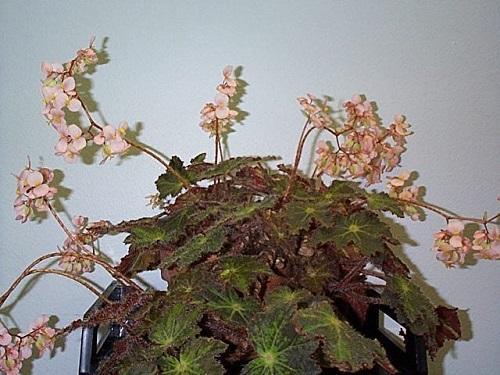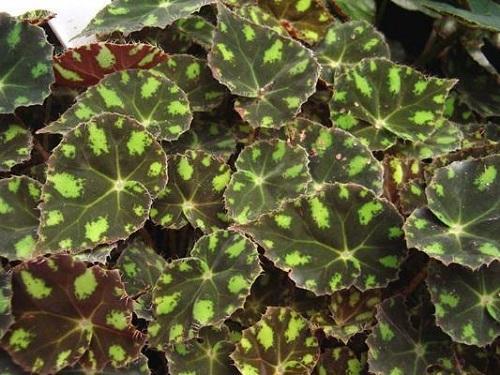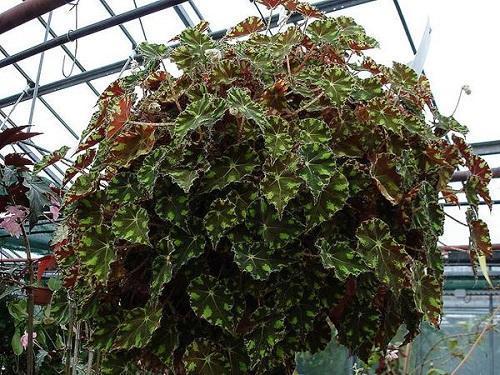Features of caring for Bauer's tiger begonia
Tiger begonia, or as it is also called Bauer's begonia, refers to decorative deciduous plants. The variety is hybrid, obtained as a result of numerous crosses. It rarely grows more than 30 cm.
The main feature of the flower is the leaves - they are brown-green, with a pattern similar to a brindle color. Thanks to this, begonia got its name. In addition, the leaves are of a very interesting shape, with white fluff at the edges.

Despite its decorative effect, tiger begonia also blooms in winter with small white flowers. But many growers remove them so that the plant gives all its strength and nutrition to the leaves. They do the same with old leaves.
Bauer's begonia care secrets

In order for begonia to please the eyes with its wonderful variegated leaves, it is necessary to provide it with suitable conditions:
- Watering... Begonia loves moisture, but do not overdo it, otherwise the roots will rot. You need to water the flower with settled water (not cold) after the top layer of the soil dries out strictly under the root or into the pallet, loosen the ground a few days after watering.
- Temperature... Begonia is a thermophilic flower. In summer, the optimum temperature for growing is +20 degrees, and in winter - at least 16 degrees.
- Air humidity. Since when water gets on the leaves, they become stained, you cannot spray the plant. The high humidity it needs can be created by placing a container of peat or sphagnum next to the flower and pouring it over. At the same time, make sure that peat (moss) was always wet.
- Location. Bright sunshine begonias contraindicated, otherwise it will lose its decorative beauty (but the number of flowers will increase). If the desire to preserve the natural color of the leaves has not disappeared, it is better to place the flower pot on the northern windowsill. At the same time, it is important to monitor the uniformity of lighting in summer and winter, when daylight hours become shorter. An ideal location would be a heated balcony on the east or northwest side of the house.
Nuances when planting begonias

Begonias need fertile soil, so sod, leafy and coniferous soil, humus, sand must be added to the soil for planting. To prevent the flower from rotting from an excess of moisture, lay a drainage layer of expanded clay on the bottom of the pot and cover it with sphagnum.
Transplanting a begonia into a new pot depends on filling in the roots of the old one. A sign that the plant needs an increase in the volume of the pot is the roots that have made their way through the holes in the bottom of the flowerpot.
A premature transplant will damage the soft and thin root system of the begonia. But every two years, replanting the plant is simply necessary.
Reproduction of begonias
There are three ways to breed begonias:
- cuttings;
- dividing the bush;
- seeds.
The most popular method of cuttings among gardeners. To do this, cut off a healthy stalk with three leaves, plant it in warm soil and put it in a darkened place.
When using one leaf for grafting, it is either immediately planted in the ground or placed in a glass of water for rooting. After about a month, the roots will appear and the begonia can be transplanted to a permanent place.